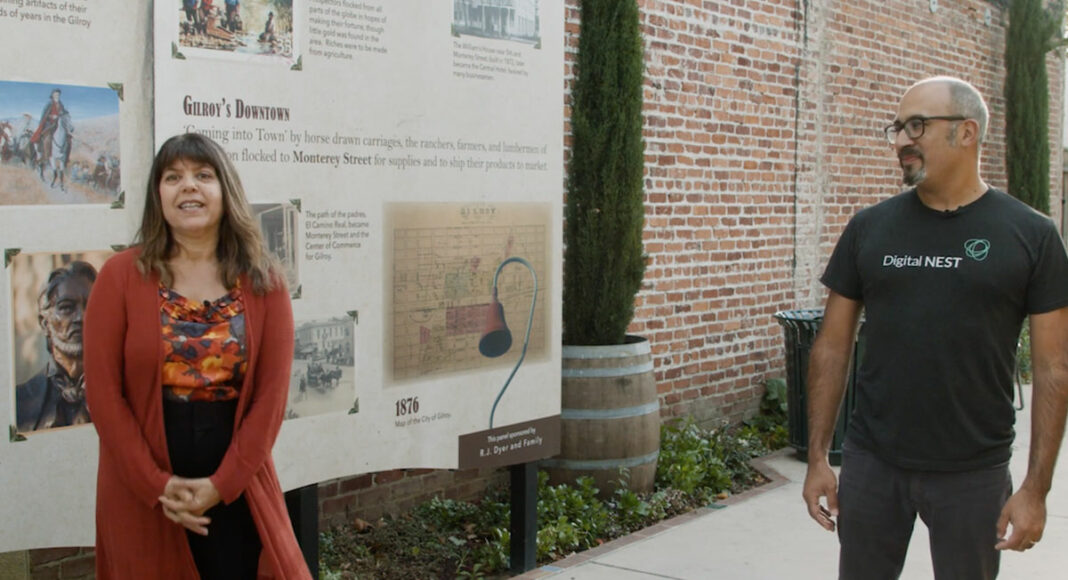The Digital NEST during its first six years has seen impressive and steady growth in the number of young people it serves and in the impact on the communities in which it is embedded.
Now, the nonprofit youth workforce development center headquartered in Watsonville is expanding again. This time it is inching closer to the hustle and bustle of Silicon Valley—the ultimate landing spot for some of the young adults the organization is molding.
The NEST during its virtual six-year anniversary event announced that it is moving its Salinas location to a larger, historic site: the former downtown firehouse. It is also opening a new NEST in Gilroy in the coming year.
Founder and Executive Director Jacob Martinez said his organization also has plans to expand into either the East Bay or to just north of the Bay Area into communities similar to Watsonville, Gilroy and Salinas—areas with large Latinx populations. That move, Martinez said, is expected to happen in the next five years.
“I think going forward with our growth we’re going to go north,” he said, “so we can surround Silicon Valley and start putting pressure on them to start looking at our talent and taking us seriously.”
Martinez said a location has not yet been selected for the Gilroy expansion. That, he said, will be determined by the community.
“We want somebody from the community to help us identify where it makes [the] most sense to put a NEST and where it will be successful,” he said.
In a video announcement, Gilroy Mayor-elect Marie Blankley said she was “very excited” that the NEST would be moving into the city.
“We can’t wait to see the enthusiasm and the inspiration and the empowerment that Digital NEST will bring to our youth,” she said.
Since opening its doors in Watsonville in 2014, the NEST has provided more than 2,000 young people with access to free tech and workforce skills training in areas such as web development, project management and digital arts. According to statistics provided by Martinez, NEST alumni, on average, make $24,788 more annually than their peers, and more than 60 alumni have been placed in high-quality career-track jobs, internships and/or college.
In addition, the NEST has hired 24 alumni as bizzNEST Member Consultants. In that role they are paid to work on projects with clients in their communities.
By the end of 2021, the NEST expects to have a $1.4 million annual economic impact over its three locations, including the new Gilroy site.
“We’re hiring people, we’re paying them well, we’re getting money into their pockets, they’re staying in their community, they’re reinvesting in their community,” Martinez said. “This is local community and economic development and it’s being driven from within, not through gentrification. It’s the people from these communities who are building these communities.”
The new Salinas site will be a place for the community to collaborate on creative and technical projects, connect and network with local professionals, meet mentors and build technology tools to address community needs, according to a press release. The move will also allow Digital NEST to work more closely with partners such as Xinampa, Hartnell College and local high schools, and to strengthen current partnerships.
“Digital NEST is an invaluable community program that connects local youth to resources in the technology industry—resources that are essential for them to compete in today’s globalized job market,” Program Manager Carlos Cortez said in a press release. “The new center will bring greater technology-skills training and opportunity, economic growth and creativity to our community.”
When NEST’s community asked for help when the Covid-19 pandemic hit, the organization quickly transitioned to one-on-one mentorship and skill-building online so members could continue their education. The organization also launched NESTaid, a financial assistance program to help members and their families who faced the financial burden of Covid-19-related job loss.
As Digital NEST opens the new space and reopens the Watsonville location, the organization has instituted safety protocols to allow youth to use the space safely, the organization said in a press release. Those protocols include scheduling times to use the center, wearing a mask and wiping down surfaces after each use.
It is not yet clear when the locations will reopen for in-person instruction.
Martinez said the growth during the organization’s first six years has been inspiring. It has also not been a surprise.
“It makes sense in a lot of ways,” Martinez said. “We have all these brilliant young people in these communities that are skilled, are talented, are diverse and we have this need around [the] workforce. You hear local industry and regional—even Silicon Valley—saying we need higher skills, we need more technical skills, we need a more diverse workforce. We need a workforce, period …. This thing took off from out of the gate. I’ve been fortunate to be able to hire good, creative people to work beside me and people still believe in our youth and believe in our staff.”












